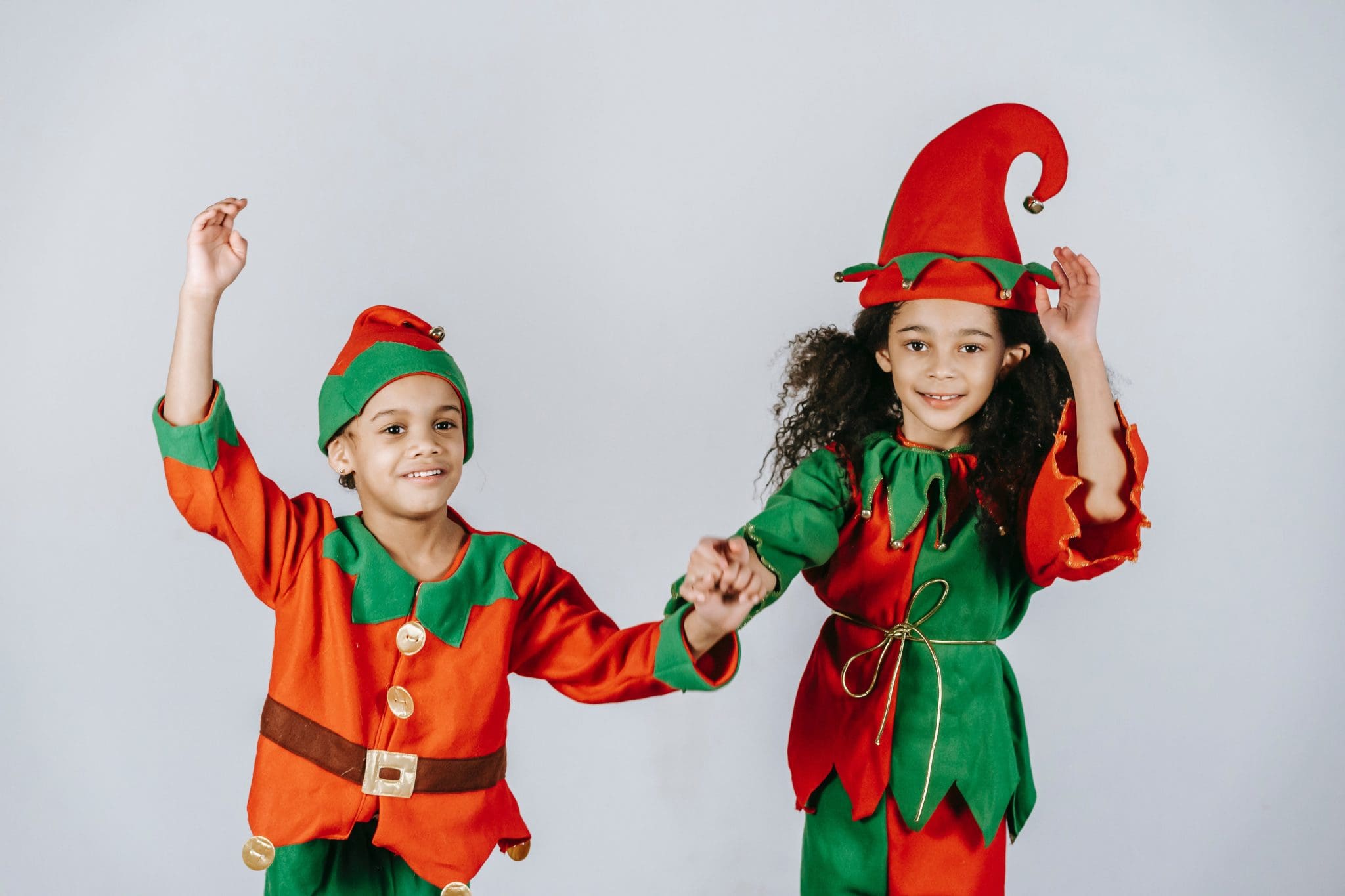Full Disclosure: Clicking on these links could mean a tiny commission for me, at no extra cost to you.
If the constant watchfulness of Elf on the Shelf and the tattle-telling to Santa isn’t your cup of tea, we don’t blame you! The holidays (and Elf on the Shelf) is supposed to be full of joy and excitement, and not manipulation tactics to get your children to behavior. So, we’ve created positive twist on the tradition! This alternative reimagines the standard elf on the shelf rules, infusing them with kindness and fun, aligning with positive parenting. Let the kids savor the elf tradition with a focus on kindness and enjoyment rather than judgment!
What is Elf on the Shelf?
“Elf on the Shelf” is a popular Christmas tradition that involves a small elf figurine placed in various locations around the home during the holiday season. The elf is said to be Santa Claus’s scout, observing children’s behavior and reporting back to Santa each night. Families often engage in creative and playful scenarios with the elf, and children wake up each morning to find the elf in a new spot. The tradition is meant to add excitement and a sense of magic to the Christmas season, encouraging good behavior in children as they anticipate the arrival of Santa Claus.

Buy Now: Available on Amazon
How Elf on the Shelf Can Be Harmful to Children’s Mental Health
Often, families assign a name to the little Elf, placing it on a high shelf in a child’s playroom or bedroom, accompanied by the explanation that “if you misbehave, the Elf will tell Santa, and you might end up on the naughty list.”
Let’s be candid about what this entails – using negative emotions to prompt behavioral changes. This practice involves several crucial elements:
- Shame: The fear of being perceived as a “bad kid” by parents, Santa, or siblings.
- Fear: Concerns about not receiving presents from Santa.
- Guilt: Feeling remorseful for not meeting the Elf’s expectations and worrying about its report to Santa.
- Anger (turned inwards): Internal frustration and self-reflection after engaging in negative behavior.
Consistently evoking these emotions, without providing the child coping mechanisms, can lead to outcomes such as depression, anxiety, adolescent anger, or oppositional defiance. It’s not to discount the normal experience of guilt, fear, or shame in child development; these emotions can serve as motivators for behavioral change.
However, if regularly instigating these emotions becomes a parenting norm or if the child struggles significantly with them, it may result in unintended negative behaviors in the long run.
The Negative Impacts of Elf on the Shelf
Consider this scenario: Your little one behaves like an angel leading up to Christmas, all thanks to the watchful eye of the tiny ‘Elf on the Shelf.’ While it may seem like a success, the underlying dynamic is that your child feels like they’re under constant observation. The behavior stems from the fear of punishment, such as the threat of no Christmas presents. Consequently, these good behaviors may fade as soon as the enforcing presence is no longer watching.
Research in child development supports this observation: a foundation of strong attachment, fondness, and respect tends to foster rule-following and later, what we define as ‘morality.’ On the flip side, relying on punishment or the fear of punishment and a constant watchful eye often leads to temporary compliance with rules. There’s the potential understanding, from the child’s perspective, that without someone watching, there will be no consequences for misbehavior.
Healthy Ways to do Elf on the Shelf for Kids
With little Elf on the Shelf’s flying in from the North Pole, let’s take this time to remember that this fun tradition should not be used to manipulate your child into behaving.
The holidays (and Elf on the Shelf) is supposed to be full of joy and excitement.
Let the kids savor the elf tradition with a focus on kindness and enjoyment rather than judgment!
Here are some updated elf rules we will be using in our household with our little.
- He does not stare at them all day watching for naughty behavior.
- He does not “tell” or “tattle on” them.
- He travels back to the North Pole to tell Santa only good things.
- He does not lose his magic if you touch him.
- We, as parents, do not use language that manipulates the child into behaving.
- He is not to be feared.
- He is here to bring more joy to the holiday (not less joy!)
So, as you grab your Elf on the Shelf for another year of holiday spirit, remember to keep this holiday tradition fun and positive for the whole family.
Buy Now: Available on Amazon









